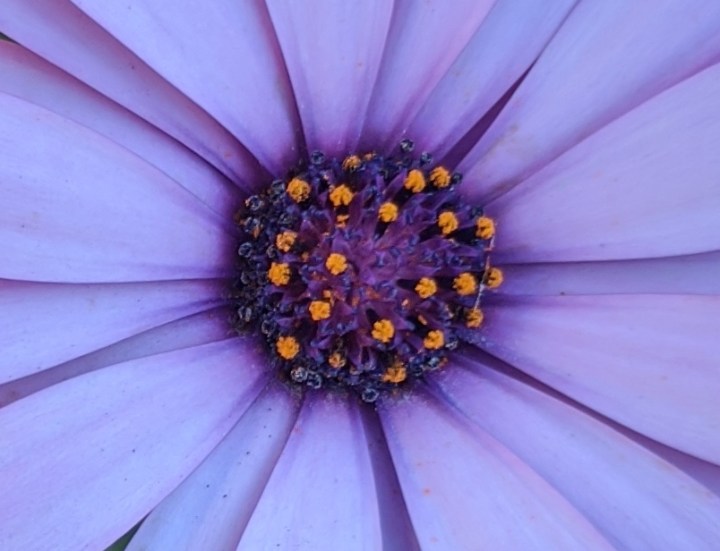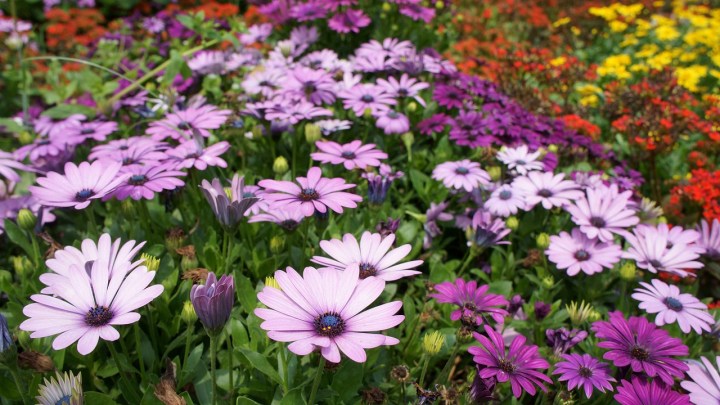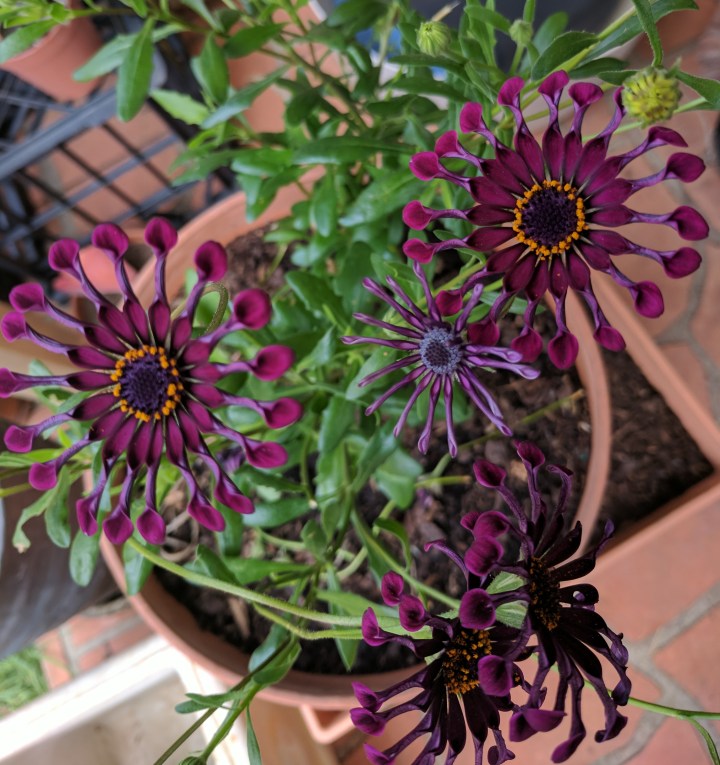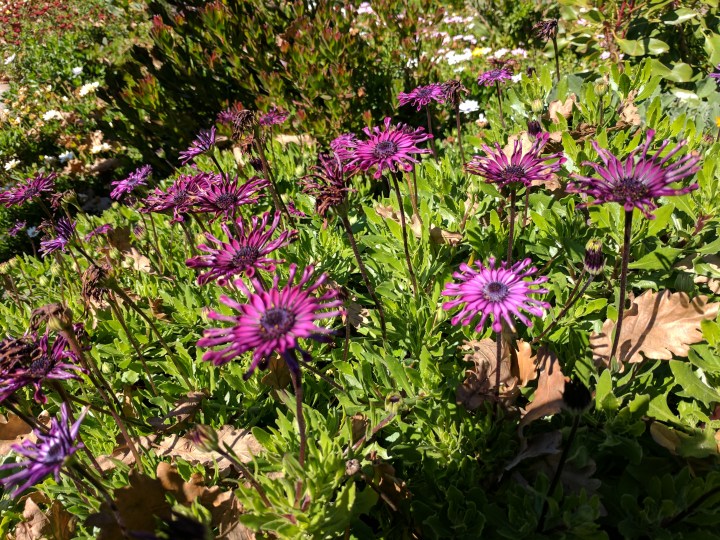The following is a list of vegetables that you can plant in April in Sydney, a temperate zone (just click on the link for the growing guide for each vegetable):
- Amaranth
- Beans – broad beans, fava beans
- Beetroot
- Broccoli
- Brussels sprouts
- Cabbage
- Carrot
- Cauliflower
- Daikon
- Endive
- Garlic
- Kale
- Kohlrabi
- Leek seedlings
- Lettuce
- Mizuna
- Mustard greens
- Parsley
- Peas
- Radish
- Rocket
- Shallots
- Silverbeet
- Snowpeas
- Spinach
- Turnip
Plant of the Month – Cape Marguerite

Osteospermum, or also known as African or Cape daisies are flowering plants belonging to the Calenduleae, in the family Asteraceae and are native to South Africa.
The beauty and colour of the Cape daisies will lift any garden. When we look at a Cape daisy like the one above it looks like one flower with radiating petals. The truth is that this plant has a much more complicated flower head.
The daisy-like Osteospermum has a composite flower made up of disc florets and ray florets.
These Composite ‘flowers’ are actually flower-like inflorescences (or groups of flowers) and the individual flowers are called florets.
The inflorescence is a swollen receptacle, which is a flattened disc carrying the individual flowers.
The outermost circle of flowers around the edge of the disc each has a single petal-like extension of the corolla, called a ligule. This type of floret is called ligulate and these ray florets are said to radiate, hence the name.
The ray florets are female and can be found in a range of colours such as white, cream, pink, purple, mauve to yellow.

The disc florets are pseudo-bisexual and come in several colours such as blue, yellow and purple and they don’t have a ligule, but instead have a corolla tube of fused or partially fused petals and are tubular. The disc florets are functionally male with the styles non functional.
The hardy types usually show a dark blue centre in the disc until the yellow pollen is shed.

Some cultivars have spooned ligules as shown in the image below of a potted Osteospermum

At night the Osteospermum close the ligules of the ray flowers over the disc flower-head to protecting it from nectar evaporation.
The evolutionary advantage of a composite flower is that it increases the visual display for pollinators and that a single visiting pollinator can also pollinate a number of flowers at one visit. These flowering plants are always a magnet for bees and can be useful to bring pollinators to your vegetable bed.
Their leaves are alternate, lanceolate and green and some variegated forms exist. The leaf margin is entire, but hardy types like the ones in the picture below are toothed.

The Cape Daisy has a bushy growth habit and grows to a height of 30-90 cm with a width of 30-60 cm.
They are perfect for beds and edges, rockeries as ground covers, and in pots on patios. The flower continuously from spring through summer to autumn with their colourful sunny blooms.
Select a good site and grow from seed or by planting seedlings in spring.
Soil and Site:
Cape daisies prefer a warm and sunny position so select a site in that is in full sun but sheltered from winds.
Although they tolerate poor conditions Cape daisies do best in a soil that is free draining and rich with a pH is 5-5.5. Test your soil and amend accordingly.
A good way to ensure the site is well draining is to grow the plants in raised garden beds or mounds or on sloping sites.
Dig the planting site to a depth of 30 cm and enrich with aged compost to promote drainage and some well rotted manure a few weeks before planting out seedlings.
Planting:
Space your new Cape daisy plants 30 cm apart to give adequate air circulation
Remove plant from container gently teasing out roots. Dig a hole slightly larger than the root ball and place the plant in the hole so the top of the root ball is level with the surrounding soil surface. Fill in the hole, and firm down the soil around the base of the plant.
Mulch well to prevent evaporation and keep weeds down, keeping the mulch away from the stem. Water the newly planted Cape daisies well.
If planting in pots use a good quality potting mix and ensure that it is free draining as Cape daisies do not tolerate wet conditions. Pots can be placed on risers to ensure that water flows through and out the pot. Do not allow the pots to dry out especially in hot conditions.
Watering and Fertilizing:
Cape daisies will flower continuously when watered and fertilised well.
It is important that the soil be evenly moist but not soggy to protect the delicate root system. Over-watering can lead to fungal disease or rot.
Water the Cape daisies in the early morning or the late afternoon at ground level to keep the leaves dry and prevent fungal disease
Apply an all-purpose water-soluble fertilizer every 2 to 3 weeks during the growing season.
Deadhead the spent blooms over the growing season to promote new flowers. Prune lightly when flowering is finished to encourage new growth.
Below are some images of the Cape daisy growing in various locations and in a variety of beautiful colours and forms. Just click on the image to see more detail of the plant and flower details.







With a little care and attention to watering the Cape daisy will bring your garden splashes of colour with long flowering blooms to cheer you from spring to autumn. With 74 species to choose from and a multitude of colour and unusual forms this herbaceous plant is both versatile and beautiful. Try growing it in your garden.

